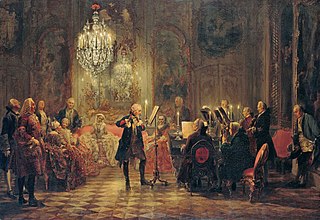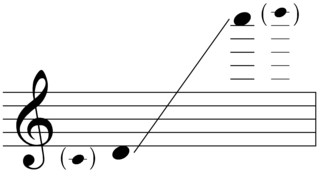Jennifer Elaine Higdon is an American composer of classical music and composition teacher. She has received many awards including the 2010 Pulitzer Prize for Music for her Violin Concerto and two Grammy Awards for Best Contemporary Classical Composition - the first in 2009 for her Percussion Concerto, the second in 2018 for her Viola Concerto. The latter was on an album of her music, Higdon: All Things Majestic, Viola Concerto, and Oboe Concerto, that won the 2018 Grammy for Best Classical Compendium.
David Frederick Stock was an American composer and conductor.
Jennifer Higdon's Concerto for Violin and Orchestra was written in 2008. The work was jointly commissioned by the Indianapolis Symphony Orchestra, the Toronto Symphony Orchestra, the Baltimore Symphony Orchestra, and the Curtis Institute of Music. It was composed for the violinist Hilary Hahn and was given its world premiere by Hahn and the Indianapolis Symphony Orchestra under the conductor Mario Venzano on February 6, 2009. The piece was later awarded the 2010 Pulitzer Prize for Music.
Timothy McAllister is an American classical saxophonist and educator. Born in 1972, he gave his solo debut at age 16 with the Houston Civic Symphony. As a teenager he attended the Interlochen Center for the Arts, where he was a pupil of Dr. John Sampen. He studied saxophone with Donald Sinta and conducting with H. Robert Reynolds at the University of Michigan. He holds a Bachelor of Music (1995), the Albert A. Stanley Medal (1995), Masters of Music (1997), and a Doctor of Musical Arts (2002). As of 2014 he has been appointed to the position of Associate Professor of Saxophone at the University of Michigan School of Music, Theatre and Dance a title held previously by Donald Sinta and Larry Teal. Each summer he teaches saxophone at Interlochen with his PRISM Quartet. Prior to his post at Michigan, he succeeded Dr. Frederick Hemke at Northwestern University following his retirement after 50 years of teaching.
The Concerto for Orchestra is an orchestral composition by the American composer Christopher Rouse. The work was commissioned by the Cabrillo Festival of Contemporary Music and is dedicated to conductor and frequent Rouse collaborator Marin Alsop. The piece was completed February 24, 2008 and premiered at the festival August 1, 2008, with Marin Alsop leading the Cabrillo Festival Orchestra.
The Percussion Concerto is a one-movement concerto for solo percussion and orchestra by the American composer Jennifer Higdon. The work was jointly commissioned by the Philadelphia Orchestra, the Indianapolis Symphony Orchestra, and the Dallas Symphony Orchestra, with contributions from the Philadelphia Music Project and the Lacy Foundation of LDI, Ltd. The piece was completed in 2005 and is dedicated to the percussionist Colin Currie, for whom the concerto was written. The piece won the 2010 Grammy Award for Best Classical Contemporary Composition. That same year, Higdon won the Pulitzer Prize for Music for her Violin Concerto (2008).
The Concerto for Orchestra is an orchestral composition in five movements by the American composer Jennifer Higdon. The work was commissioned by the Philadelphia Orchestra with contributions from the National Endowment for the Arts, the Philadelphia Music Project, and Peter Benoliel. It was premiered at the Kimmel Center for the Performing Arts in Philadelphia June 12, 2002, with conductor Wolfgang Sawallisch leading the Philadelphia Orchestra.
The Piano Concerto is a concerto for solo piano and orchestra by the American composer Jennifer Higdon. It was commissioned by the National Symphony Orchestra and was first performed December 3, 2009 at the John F. Kennedy Center for the Performing Arts in Washington, D.C.. The premiere featured pianist Yuja Wang and the National Symphony Orchestra under conductor Andrew Litton.
Concerto 4-3 is a concerto for two violins, double bass, and orchestra in three movements by the American composer Jennifer Higdon. The work was commissioned for the string trio Time for Three by the Philadelphia Orchestra, the Pittsburgh Symphony Orchestra, and the Wheeling Symphony Orchestra. It was first performed in Philadelphia on January 10, 2008, by Time for Three and the Philadelphia Orchestra conducted by Christoph Eschenbach.
Dooryard Bloom is a composition for solo baritone and orchestra by the American composer Jennifer Higdon. The work was commissioned by the Brooklyn Philharmonic in 2004 and was premiered on April 16, 2005 by the baritone Nmon Ford and the Brooklyn Philharmonic under the conductor Michael Christie. The piece is adapted from the poem "When Lilacs Last in the Dooryard Bloom'd" by the American author Walt Whitman.
Fanfare Ritmico is a single-movement orchestral composition by the American composer Jennifer Higdon. The work was commissioned by The Women's Philharmonic as part of The Fanfares Project. It was given its world premiere in March 2000 by conductor Apo Hsu and the Women's Philharmonic.
Loco is an orchestral composition in one movement by the American composer Jennifer Higdon. The work was commissioned by the Ravinia Festival of Highland Park, Illinois to commemorate the Ravinia train as part of the Train Commission Project. It was first performed on July 31, 2004 at the Ravinia Festival by the Chicago Symphony Orchestra.
The Singing Rooms is a concerto for solo violin, choir, and orchestra by the American composer Jennifer Higdon. The work was jointly commissioned by the Philadelphia Orchestra, the Atlanta Symphony Orchestra, and the Minnesota Orchestra. It was first performed on January 17, 2008 in Philadelphia by the violinist Jennifer Koh, The Philadelphia Singers, and the Philadelphia Orchestra under the conductor Christoph Eschenbach. The text of the piece is set to poems by Jeanne Minahan.
The Oboe Concerto is a concerto for a solo oboe and orchestra by the American composer Jennifer Higdon. The work was commissioned by the Minnesota Commissioning Club and was premiered on September 9, 2005 by the oboist Kathy Greenbank and the Saint Paul Chamber Orchestra. Higdon later reworked the piece into her Soprano Sax Concerto in 2007.
blue cathedral is an orchestral composition by the American composer Jennifer Higdon. The work was commissioned by the Curtis Institute of Music in 1999 to commemorate the conservatory's 75th anniversary. It was first performed in 2000 by the Curtis Institute of Music Symphony Orchestra. The piece is dedicated to the memory of Higdon's brother and is one of the composer's most performed works.
The Saxophone Concerto is a composition for alto saxophone and orchestra by the American composer John Adams. The work was jointly commissioned by the Sydney Symphony Orchestra, the St. Louis Symphony, the Baltimore Symphony Orchestra, and Orquestra Sinfônica do Estado de São Paulo Foundation. It was given its world premiere in Sydney, Australia on August 22, 2013 by the saxophonist Timothy McAllister and Sydney Symphony Orchestra under the direction of Adams.
The Low Brass Concerto is a concerto for four solo low brass instruments and orchestra by the American composer Jennifer Higdon. The work was commissioned by the Chicago Symphony Orchestra for their renowned low brass section and co-commissioned by the Baltimore Symphony Orchestra and the Philadelphia Orchestra. It was composed in 2017 and was first performed by the Chicago Symphony Orchestra under the direction of Riccardo Muti on February 1, 2018.







